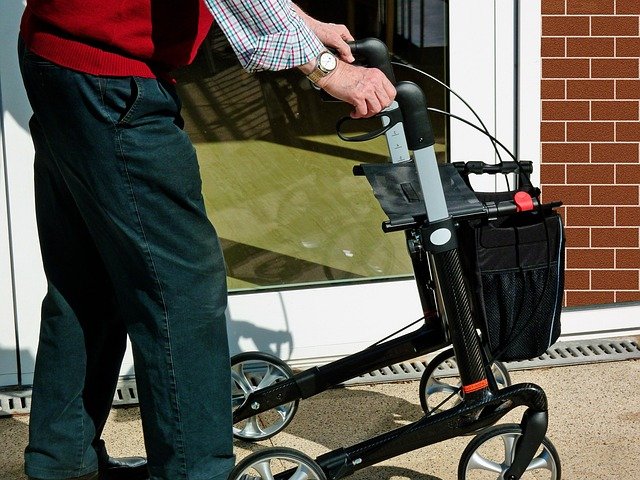Why Physical Therapists Recommend Rollators for Enhanced Mobility and Independence
Wondering why physical therapists often recommend rollators instead of traditional walkers? It’s about more than just mobility—rollators offer greater support, stability, and comfort. Find out how they can make a real difference in daily movement and independence.

What Makes Rollators Different from Traditional Walkers?
Rollators are a step up from traditional walkers in terms of design and functionality. Unlike standard walkers, which require lifting and placing with each step, rollators feature four wheels that allow for smooth, continuous movement. This design makes them easier to maneuver, especially on various surfaces and terrains. Additionally, rollators typically come equipped with a seat, backrest, and storage basket, providing users with added comfort and convenience.
How Do Rollators Improve Stability and Balance?
One of the primary reasons physical therapists recommend rollators is their ability to enhance stability and balance. The four-wheel design provides a wider base of support compared to traditional walkers, reducing the risk of falls. The handlebars on rollators are also adjustable, allowing users to maintain proper posture while walking. This improved posture contributes to better balance and reduces strain on the back, shoulders, and arms.
What Are the Key Benefits of Using a Rollator?
Rollators offer numerous advantages that can significantly improve a person’s quality of life:
-
Increased independence: With a rollator, users can navigate their environment more easily, promoting self-reliance in daily activities.
-
Enhanced mobility: The smooth-rolling wheels allow for more natural movement and longer distances with less fatigue.
-
Improved posture: Adjustable handlebars encourage users to stand up straight, reducing the risk of back pain and other posture-related issues.
-
Built-in rest options: The seat and backrest provide a convenient place to rest when needed, allowing users to take breaks during longer outings.
-
Storage capabilities: Most rollators come with a basket or pouch, making it easier to carry personal items or groceries.
-
Versatility: Rollators can be used both indoors and outdoors, adapting to various surfaces and environments.
How Do Rollators Support Active Lifestyles?
Physical therapists often recommend rollators to patients who want to maintain an active lifestyle. The ease of use and added stability allow individuals to participate in various activities they might otherwise avoid. Whether it’s taking a walk in the park, shopping at the grocery store, or attending social gatherings, rollators provide the support needed to stay engaged and active.
What Features Should You Look for in a Rollator?
When considering a rollator, it’s essential to choose one that meets your specific needs. Physical therapists recommend looking for the following features:
-
Adjustable height: Ensures proper fit and posture
-
Comfortable seat and backrest: Provides a place to rest when needed
-
Sturdy frame: Supports the user’s weight and provides stability
-
Easy-to-use brakes: Allows for quick stops and parking
-
Foldable design: Makes storage and transportation easier
-
Weight capacity: Matches the user’s needs
-
Wheel size: Larger wheels are better for outdoor use
How Do Rollators Compare in Terms of Cost and Features?
When choosing a rollator, it’s important to consider both cost and features. Here’s a comparison of some popular rollator models:
| Model | Weight Capacity | Key Features | Estimated Cost |
|---|---|---|---|
| Drive Medical Nitro Euro Style | 300 lbs | Lightweight, large front wheels, back support | $200-$250 |
| NOVA Traveler 3 Wheel Walker | 250 lbs | Compact, easy to fold, hand brakes | $80-$120 |
| Medline Premium Empower Rollator | 300 lbs | Memory foam seat, cup holder, backrest | $150-$200 |
| Hugo Explore Side-Fold Rollator Walker | 300 lbs | Side-folding, under-seat storage, ergonomic handles | $180-$230 |
| Drive Medical Go-Lite Bariatric Steel Rollator | 500 lbs | Extra-wide seat, reinforced frame, padded backrest | $250-$300 |
Prices, rates, or cost estimates mentioned in this article are based on the latest available information but may change over time. Independent research is advised before making financial decisions.
Rollators have revolutionized mobility assistance, offering users a blend of support, independence, and comfort. Physical therapists consistently recommend these devices for their ability to enhance balance, improve posture, and promote active lifestyles. By understanding the benefits and features of rollators, individuals can make informed decisions about their mobility needs and choose a device that best supports their daily activities and overall well-being.
This article is for informational purposes only and should not be considered medical advice. Please consult a qualified healthcare professional for personalized guidance and treatment.




